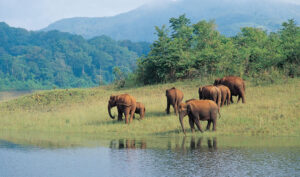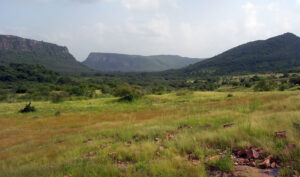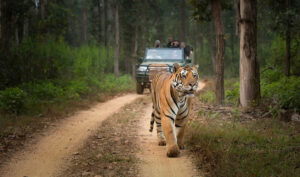Jim Corbett National Park is a popular wildlife destination located in Uttarakhand. The park is spread over an area of 520 square kilometers and is named after Jim Corbett, a British conservationist, and author who played a key role in the establishment of the park.
Jim Corbett National Park is home to a rich variety of flora and fauna, including the Bengal tiger, and is a popular destination for wildlife enthusiasts and nature lovers from around the world.
Jim Corbett National Park was established in 1936 as the Hailey National Park, named after the then Governor of the United Provinces, Sir Malcolm Hailey.
In 1957, the park was renamed Jim Corbett National Park in honor of Jim Corbett, who had played a significant role in the establishment of the park and had also authored several books on Indian wildlife.
Jim Corbett National Park is situated in the foothills of the Himalayas and is divided into several zones.
The park is spread across three districts: Nainital, Pauri Garhwal, and Almora. The terrain of the park is varied, with hills, rivers, and valleys. The park is dominated by the Ramganga River, which flows through the park and provides a natural habitat for a variety of animals and birds.
Flora and Fauna
Jim Corbett National Park is home to a diverse range of flora and fauna. The park is covered with deciduous forests and has several grasslands, which provide a natural habitat for a variety of animals and birds.
The park is best known for its population of tigers, but it is also home to several other species such as leopards, elephants, wild boars, sambar deer, chital, and langurs. The park is also home to over 500 species of birds.
Tourist Attractions
- Wildlife Safari: The park offers jeep safaris and elephant safaris, which are great ways to explore the park.
- Corbett Museum: The Corbett Museum is situated in the park and is dedicated to the life and work of Jim Corbett.
- Garjiya Devi Temple: The Garjiya Devi Temple is situated near the park and is a popular pilgrimage site.
- Corbett Waterfall: Corbett Waterfall is a scenic waterfall situated near the park and is a popular tourist attraction.
- Sitabani Temple: The Sitabani Temple is situated near the park and is dedicated to Goddess Sita.
Tips for Visiting
- Book your safari in advance: It is recommended to book your safari in advance, especially during the peak season, as the park has a limited number of vehicles allowed inside.
- Dress appropriately: It is recommended to wear light, comfortable clothes and carry a hat or sunscreen to protect yourself from the sun.
- Hire a Guide: It is highly recommended to hire an experienced guide who can help you navigate the park and spot the wildlife.
- Follow the Park’s Rules and Regulations: The park has strict rules and regulations that visitors must follow to ensure the safety of both themselves and the wildlife.
- Carry essential items: It is important to carry essential items such as water, snacks, binoculars, a camera, and insect repellent.
Conclusion
Jim Corbett National Park is a beautiful and captivating wildlife destination in India that offers visitors an opportunity to experience the natural beauty of the Himalayan foothills and spot some of the most magnificent wildlife species.
From tigers to elephants, the park’s diverse flora and fauna provide an unforgettable experience for nature lovers and wildlife enthusiasts alike.
The park’s history, geography, and tourist attractions make it a must-visit destination for anyone visiting India. With several safari options and a variety of other attractions, there is something for everyone in Jim Corbett National Park.
Follow the park’s rules and regulations and take necessary precautions to ensure the safety of both yourself and the wildlife.
The park is a perfect destination for those looking for a serene and peaceful place. The park offers a glimpse into the natural beauty of India and is a testament to the country’s commitment to preserving its wildlife and natural habitats.
If you’re planning a trip to India, be sure to add Jim Corbett National Park to your itinerary for an unforgettable wildlife experience.





